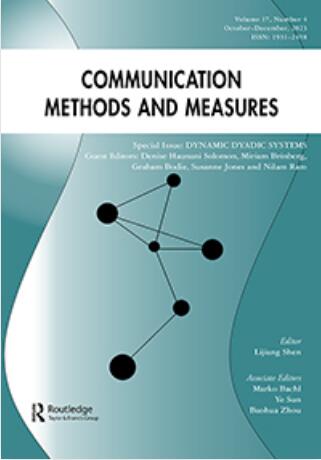新闻多样性水平的细粒度分析
IF 6.3
1区 文学
Q1 COMMUNICATION
引用次数: 8
摘要
摘要许多研究者认为,呈现多样化的内容是新闻媒体充分行使民主使命的先决条件。虽然先前的新闻多样性研究已经提供了重要的理论见解,但我们在这里认为,通过使用文本分析的计算方法,可以显著提高这一概念的学术知识。使用自动化方法,研究人员可以增加分析数据的范围和分析的分辨率。本文提出了一个分析新闻多样性的新框架,该框架由两个不同的阶段组成。在第一阶段,使用计算文本分类方法,以高分辨率分析新闻文本对广泛的政治和社会问题的关注。在第二阶段,对文本分类进行汇总,并大规模评估媒体对这些问题的关注度分布(即新闻多样性)。在介绍了这一新方法之后,我们说明了它在检验关于新闻多样性的理论假设方面的有用性。我们比较了美国三家精英报纸和三家受欢迎报纸的经济报道多样性(N=252807篇文章),发现精细的分析缓解了之前研究中对大众媒体内容多样性低的担忧。本文章由计算机程序翻译,如有差异,请以英文原文为准。
Fine-Grained Analysis of Diversity Levels in the News
ABSTRACT Many researchers consider the presentation of diverse content as a prerequisite for the news media to fully exercise their democratic mandate. While prior news diversity studies have contributed important theoretical insights, we argue here that scholarly knowledge of this concept can be significantly advanced by employing computational methods for text analysis. Using automated methods, researchers can increase both the scope of data being analyzed and the resolution of the analysis. This article presents a novel framework for analyzing news diversity consisting of two distinct stages. In the first stage, a computational text classification method is used to analyze, at a high resolution, the attention given in news texts to a broad range of political and social issues. In the second stage, the text classifications are aggregated, and the distributions of media attention to those issues (i.e., news diversity) are assessed on a large scale. After presenting the novel approach, we illustrate its usefulness for testing theoretical hypotheses about news diversity. We compare the diversity of economic coverage in three elite and three popular US newspapers (N = 252,807 articles) and find that a fine-grained analysis relaxes concerns raised in previous studies about low content diversity in the popular press.
求助全文
通过发布文献求助,成功后即可免费获取论文全文。
去求助
来源期刊

Communication Methods and Measures
COMMUNICATION-
CiteScore
21.10
自引率
1.80%
发文量
9
期刊介绍:
Communication Methods and Measures aims to achieve several goals in the field of communication research. Firstly, it aims to bring attention to and showcase developments in both qualitative and quantitative research methodologies to communication scholars. This journal serves as a platform for researchers across the field to discuss and disseminate methodological tools and approaches.
Additionally, Communication Methods and Measures seeks to improve research design and analysis practices by offering suggestions for improvement. It aims to introduce new methods of measurement that are valuable to communication scientists or enhance existing methods. The journal encourages submissions that focus on methods for enhancing research design and theory testing, employing both quantitative and qualitative approaches.
Furthermore, the journal is open to articles devoted to exploring the epistemological aspects relevant to communication research methodologies. It welcomes well-written manuscripts that demonstrate the use of methods and articles that highlight the advantages of lesser-known or newer methods over those traditionally used in communication.
In summary, Communication Methods and Measures strives to advance the field of communication research by showcasing and discussing innovative methodologies, improving research practices, and introducing new measurement methods.
 求助内容:
求助内容: 应助结果提醒方式:
应助结果提醒方式:


